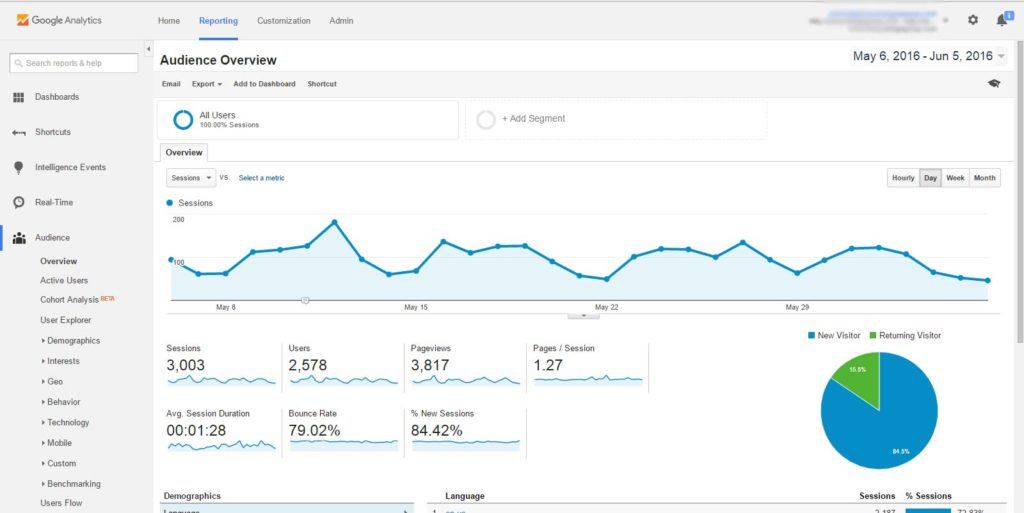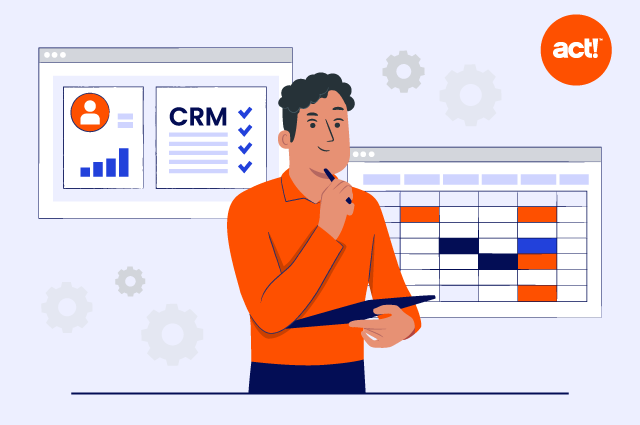For many entrepreneurs and small business owners, the topic of content marketing is often the most daunting. As we discussed in our Part 1 blog, there are many great tools and templates to help you quickly get a website or eCommerce store off the ground. However, when it comes to attracting an audience, there’s no single tool or magic approach for every business.
Depending on the size of your company (and your budget), paid advertising is one of the easiest and most obvious ways to drive traffic to your website. Tactics such as paid search and social media advertising such as Facebook ads are types of paid ads that can help increase click-through rates and bring in more potential customers. There are also search engine optimization (SEO) adwords, known as high commercial intent or buyer intent keywords, used in search queries from buyers who are actively looking to purchase a product or service. For instance, “where to buy organic produce near me” is clearly a search term from someone looking to make an immediate purchase, while “what is the difference between organic and conventional produce” is an educational search term. Knowing the difference between various types of search terms, and how they relate to your business strategy, can help you determine how to best invest your marketing budget.
Paid advertising, however, may not be in the budget for every small business owner. In that case, there are many free ways to increase website traffic with just a little extra work.
Six free ways to drive website traffic
1. Leverage Social Media
If your business isn’t already on social media, now is the time to create a social media presence for your business (which should not be confused with your personal social media accounts). Consider where your potential audience is most likely to be, as well as the type of content you’re likely to promote. For instance, if you run a small art gallery or flower shop, you should surely have accounts on image-heavy sites like Instagram and Pinterest. If you offer professional business services, you’ll probably want to increase your visibility on LinkedIn. Of course, Facebook and Twitter can also be a great way to share website content, such as promotions and events, as well as to share content from other sources that may be relevant to your audience.
Today, we were featured in the @FedEx webinar “How to Choose the Right Ecommerce Technology for Your Small Business” 🎉
— ShipperHQ (@ShipperHQ) February 18, 2021
We’re proud to be integrated with FedEX Hold at Location services & help merchants provide the most convenient options in checkout! 🛒https://t.co/JBnYXXA2Jo pic.twitter.com/0UyThfZHo5
2. Engage Your Community
Engaging with your target audience is where the real work (and the real payoff) happens. Your website and social media profiles shouldn’t just be used to broadcast static content. Having real, active conversations with customers through blogging and other methods is a great way to build relationships and stay top of mind. Keep in mind, of course, that many people may leave reviews — good and bad — in the comments, so you’ll need a strategy for responding to those promptly. The same thing goes for instant messages. As a small business owner, you may not be able to respond to every message right away, but you should at least tell your audience when they can expect a response, such as the next business day. And be sure to follow through, because consistency is key to driving traffic to your site.
Customer Service is our priority to ensure a great experience at Big Frog. pic.twitter.com/YJzd49y3rO
— Big Frog Custom T-shirts & More (@bigfrogelpaso) February 18, 2021
3. Mix Up Your Content
Do you find yourself retweeting the same kinds of content, such as funny or inspirational memes? When is the last time you refreshed your website with new product and service offerings, such as holiday packages or extended business hours? To drive more traffic to your website, try mixing up blog posts with other types of high-quality content, such as videos, photos, infographics, articles, tutorials, podcasts, webinars, or other content that may interest your target market. You may also consider adding guest posts from industry influencers and other bloggers to help increase traffic as well. The key is to ensure you’re consistently offering new content on your website that can easily be shared across social networks.
I love sharing tips about my favorite form of content: VIDEO!! 🎬
— Mari Smith (@MariSmith) February 20, 2021
Check out this great infographic packed with goodies, compiled by our friends at @Animoto! 🥳#socialmediamarketing #videomarketing https://t.co/6sS5HXeZr7
4. Don’t Abandon Email Marketing
Email is not dead! It’s tempting to rely on social media platforms to increase brand awareness, but traditional email can still be a highly effective way to drive people to your website, or even specific webpages. An all-in-one CRM tool can make email marketing incredibly quick and easy by giving you a library of templates to choose from, as well as a simple way to manage all of your contacts in one place. Like all of your other digital marketing activities, your content strategy should be planned in advance to avoid contacting your email list either too much or not enough. With insights about customer purchases and activity from your CRM, you can better target emails to promote new products and services, or to send friendly reminders and other personalized communication.
5. Review Your Analytics Data
Google Analytics provides a wealth of insight to help you better understand the performance of your website, content, marketing campaigns, and more. You can easily view detailed data about nearly every aspect of your site, which can also help your site perform better in Google searches. For instance, you can see which pages attract the most traffic, get a snapshot of visitor demographics, track where users come from, and identify which content they engage with the most. As a result, diving into the capabilities of these free tools can help you make smarter and informed business decisions.

6. Make Sure Your Site is Responsive (and Fast)
A responsive website is one that can easily detect which device your visitor is using to view your website, and then automatically adjusts the layout to fit the dimensions of that device. Given that the majority of users today will view your website on a smartphone, tablet, or other mobile device, your website must be designed to give them the best experience so they can find the great content they need without having to pinch and scroll their way through the pages. Fortunately, many website builders, such as WordPress, Squarespace, Weebly, and more are optimized to help you build a fast and responsive website without a lot of technical know-how on your part. However, it’s still critical to know how your site performs across a range of devices, not just desktops.
Once your fast, responsive, and content-rich website is built, how can you use the data you gain to drive better business results?
Stay tuned for Part 3 of our “Revitalize Your Small Business” blog series: “How to Create More Efficient and Automated Marketing Campaigns.”





